Original title: The bullish case for Solana (Re)staking
Original author: tradetheflow_, encryption researcher
Compiled by: Ashley, BlockBeats
Editor’s note: Ethereum is currently the main battlefield for re-pledge, but with Solana’s rapid development in this bull market, its low cost, high throughput and strong network effects make it a potentially hot track for re-pledge. The author explores market opportunities for Solana repledge, including its ecological maturity, innovation potential, network expansion capabilities, and optimization of DeFi capital efficiency.
The following is the original content (the original content has been compiled for ease of reading and understanding):
Restaking is a simple but influential concept: it allows pledged assets to be reused in multiple decentralized services, or as Jito calls Node Consensus Networks (NCNs).
This approach brings multiple advantages. Most notably, it enhances the security and integrity of decentralized services, allowing them to leverage the economic security of L1 without having to expend significant resources to design their own (and often more fragile) security models. For pledgers, it also improves capital efficiency, because a single asset can provide security for multiple decentralized services at the same time, which is expected to achieve a higher return on capital.
In fact, many top people in the industry believe that re-pledge is a disruptive innovation that can build a safer, more flexible, and more scalable blockchain environment and accelerate industry development. This has also attracted a lot of market attention, making re-pledge one of the largest TVL tracks on Ethereum.

However, to date, re-pledge has mainly concentrated on Ethereum, as it is considered to be the PoS blockchain with the highest economic security and most widely adopted rate currently. But with Solana’s strong growth since this bull market-especially against the background of relatively stagnant activity on the Ethereum main network and the migration of large amounts of liquidity to L2 (such as Base)-a new question has emerged: Does Solana have enough reasons to support re-pledge?
In this article, we will explore the repledge potential on Solana from multiple perspectives and analyze the feasibility of this market opportunity. Let’s take a deeper look.
Solana’s maturity is sufficient to support re-pledge
For re-pledge, the underlying public chain must have strong economic security. This is the advantage that Ethereum has always had: currently, the Ethereum main network has a total of 34.3 million ETH pledges (worth approximately US$124 billion), 4701 out-of-block verifiers, and six types of consensus clients. It is one of the oldest and most reliable public chains with a high industry reputation. Therefore, Ethereum has become the preferred platform for re-pledge.
However, humans are often accustomed to extrapolating the present situation into the future, assuming that Ethereum will always remain dominant. But history tells us that change in technology is often driven by creative destruction. For example, Yahoo was once considered the dominant player in the search engine space, but was later surpassed by Google. Similarly, IBM was once considered the ultimate winner in the personal computer space, but eventually Apple took its place.
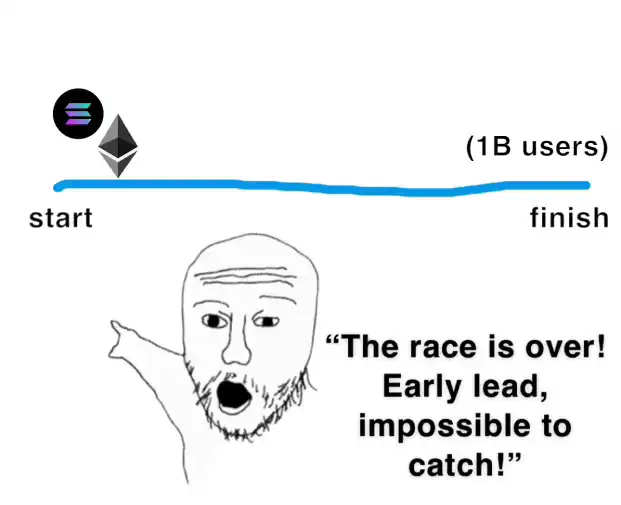
So, are we witnessing a similar moment in Ethereum’s history? Is it still necessary for the entire repledge stack to rely entirely on Ethereum? Especially given the trend that new asset issuance on the Ethereum main network is shifting to L1 such as Solana or L2 such as Base, and the increasing uncertainty about the development direction of Ethereum, we need to rethink this issue.
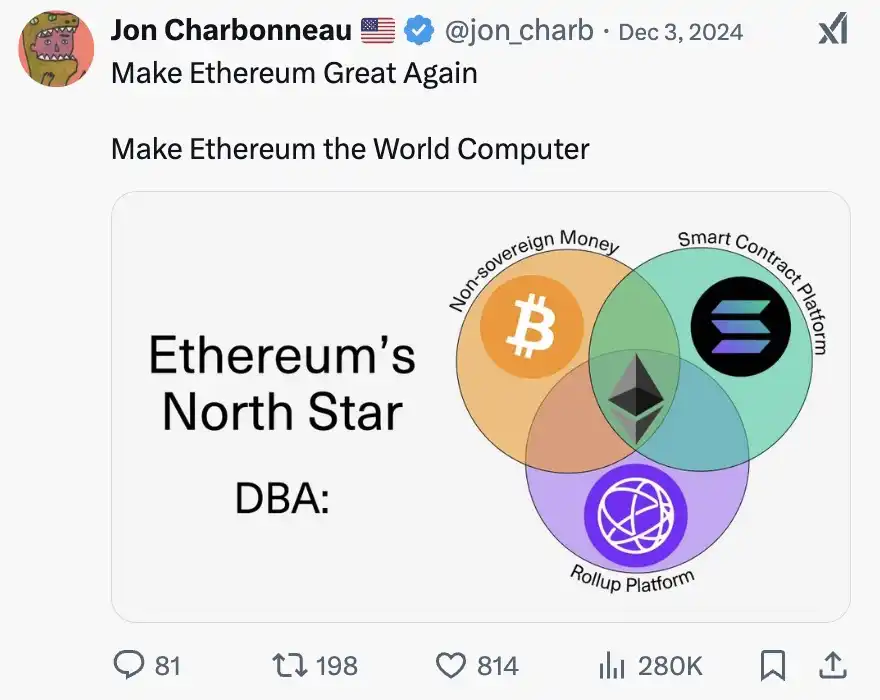
If we believe that re-pledge is indeed a game-changing technology, then we should consider expanding it to other L1s, not just Ethereum. This will give developers the freedom to choose which consensus layer to gain trust from.
In this context, Solana is undoubtedly a strong candidate for re-pledge. Since this bull market, Solana has become the fastest-growing L1, and its economic security and ecological maturity have improved significantly. As of now, approximately 65% of SOL’s circulating supply has been pledged, with a total value of approximately US$73 billion (only US$24 billion a year ago). In addition, Solana has nearly 1400 block validator nodes and supports two existing client validators. In the future, new clients such as Firedancer, Sig and Agave will be added.
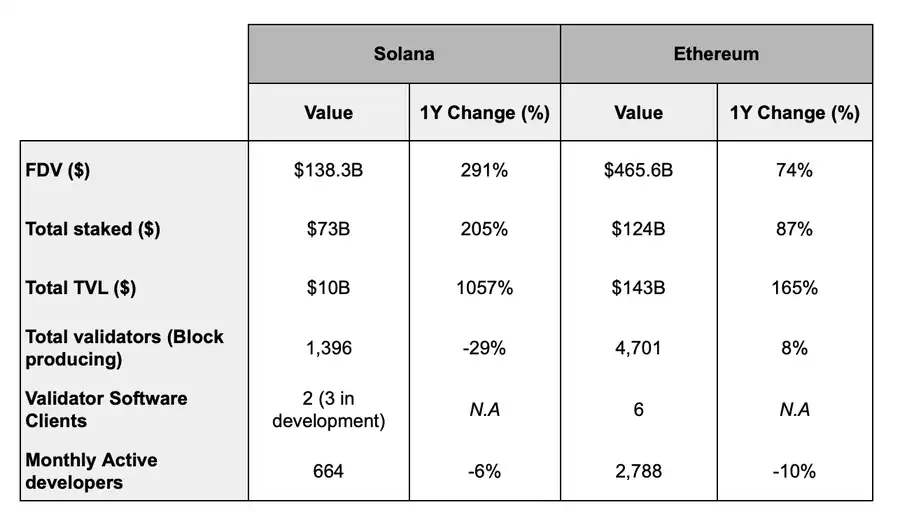
More importantly, Solana is known for its extremely low transaction costs and extremely fast transaction speeds, and its adoption rate among users and developers continues to rise. Solana is currently the fastest public chain for application development in the encryption industry. It not only achieves real organic growth, but also successfully overcomes the cold start problem and establishes a strong network effect. All of this shows that Solana’s ecosystem is mature enough and it is practical to pledge it on Solana.
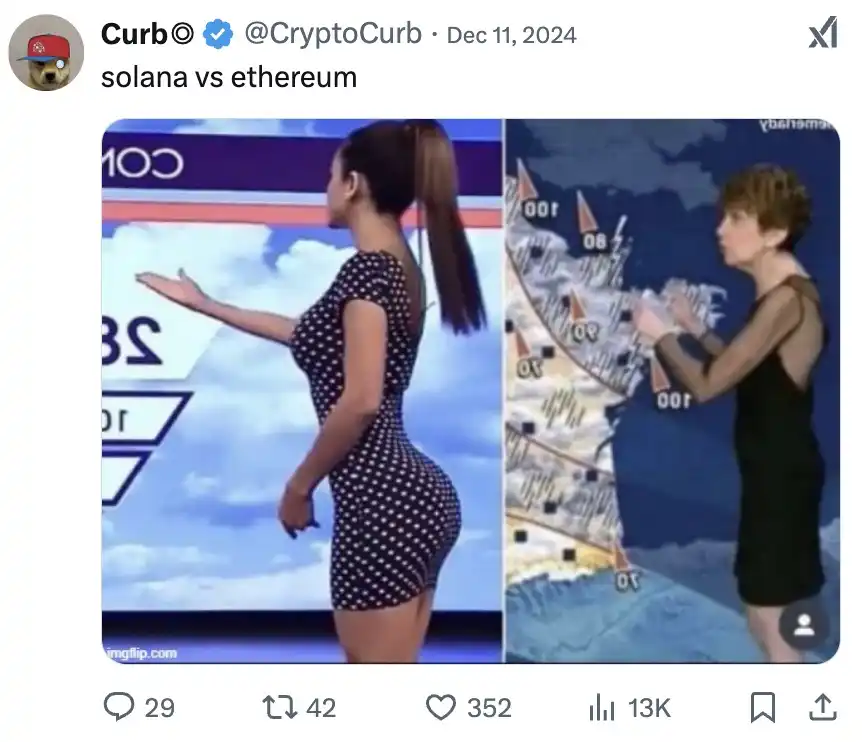
Repledge on Solana has greater potential than Ethereum
Ethereum is a pioneer in smart contracts, but its high Gas fees limit the scope of development of on-chain applications. Solana’s architecture allows developers to create richer application forms at the L1 level. Therefore, we can argue that there is more room for re-pledge design on Solana than on Ethereum.
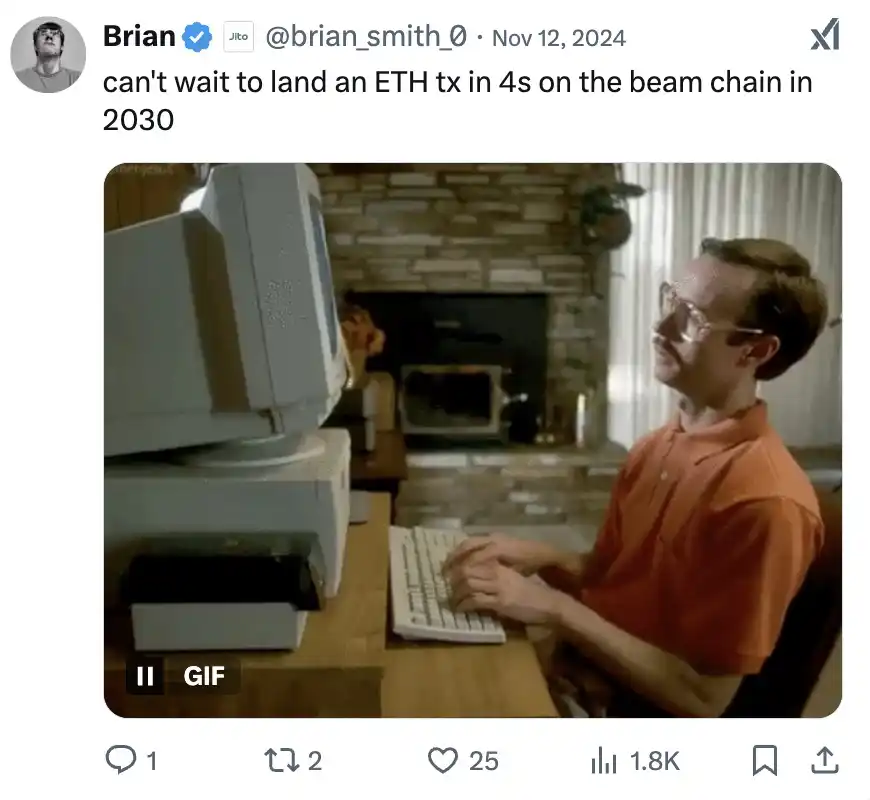
First, Solana’s low transaction and computing costs reduce the entry threshold for Node Consensus Networks (NCNs). Unlike Ethereum, which has high fixed costs that limit participation, Solana supports smaller, more cost-effective and more efficient deployments of NCNs, allowing it to be optimized for specific use cases. This not only allows more services to be outsourced, reducing reliance on direct on-chain applications, but also expands interoperability across the ecosystem.
Second, NCNs on Solana can handle more complex operations, and code can be deployed at a higher density without affecting on-chain computing capabilities-which is different from the EigenLayer design on Ethereum. This makes on-chain verifiability, on-chain reward allocation, and on-chain data release possible, and enhances the overall flexibility and robustness of re-pledge. Ethereum serves as a testing ground for re-pledge, but in the long run, Solana’s re-pledge seems to have greater potential in real application scenarios.
In addition, Solana also has significant advantages over Ethereum in terms of liquidity re-pledge tokens (VRTs). On the one hand, Solana’s low costs can significantly reduce the operating costs of liquidity re-pledge token providers. In a business model where every basis point is crucial, this cost optimization not only improves profitability, but also promotes market competition and forms a more dynamic ecosystem, allowing different VRTs to provide diversified re-pledge strategies and more flexible slashing conditions.
On the other hand, liquidity re-pledge on Solana is also more affordable for users, as low transaction costs lower the participation threshold and make it easier for them to use liquidity re-pledge tokens in various DeFi applications without having to worry about high fees. This is crucial to driving long-term capital inflows.
Re-pledge can drive Solana network innovation
Solana’s vision has always been to become a global computing interface on which everyone can build applications. To achieve this goal, Solana has always focused on improving throughput and reducing latency on the base chain.
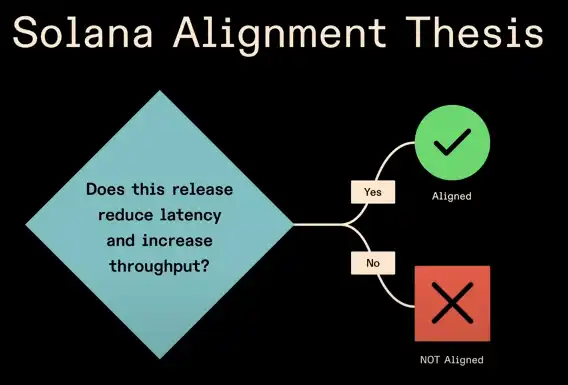
This is a strong and reasonable vision. However, the laws of physics cannot be violated, and we cannot increase throughput 10 times or reduce latency 10 times in a short period of time. Achieving orders of magnitude improvement requires a lot of resources and long-term efforts. Therefore, although this cannot be achieved in the short term, people have gradually realized that not all calculations must occur in L1. This is also reflected in recent discussions about “network extensions.”
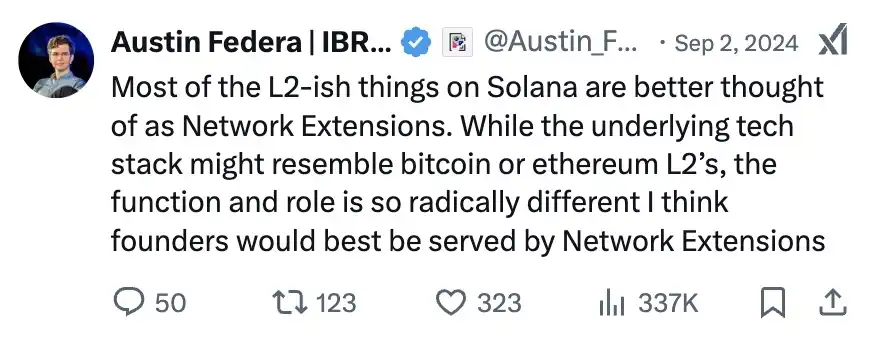
From this perspective, re-pledge can bring new design possibilities to Solana’s network expansion and “network expansion” plans. Its design space is extremely broad, and although it is unclear how the mechanism will be implemented in detail, it is likely to evolve into a powerful infrastructure-level extension tool. For example, the @SonicSVM project claims to be the first Layer 2 in the Solana ecosystem specifically for sovereign games, and it is built based on HyperGrid, a horizontal extension framework for the Solana virtual machine. The project plans to use Jito (Re)staking to enhance the security and operational efficiency of its SVM and support multifunctional applications in the Solana ecosystem, covering games, DeFi and other use cases.
In addition, the strong security guarantee provided by the re-pledge mechanism can also effectively improve the reliability of the Solana network. For example, Jito TipRouter NCN is under development to decentralize MEV tip distribution and enhance its security. Another example is Nozomi, a protocol launched by @temporal_xyz that will use Jito (Re)staking to reshape Solana’s transaction microstructure and address issues such as sandwich attacks, slip points and transaction timeouts. These innovations align with Solana’s long-term vision to significantly optimize the user experience, making Solana not only fast and low-cost, but also safer, stable, and easy-to-use.
In addition to high performance and powerful on-chain data indicators, Solana also carries an entrepreneurial spirit. Over the past few years, we have witnessed the rise of a series of successful projects such as Jito, Kamino, Jupiter and Helium. But this is just the beginning, and the number of projects choosing to build within the Solana ecosystem continues to grow.
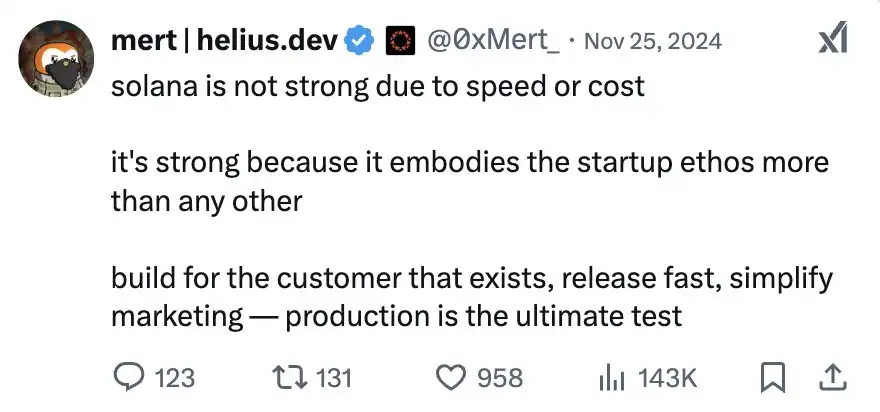
If Solana is becoming the preferred public chain for developers, then re-pledge will undoubtedly occupy a place among them. It can extend Solana’s economic security to a range of critical services in the ecosystem, such as oracle, cross-chain bridges, and sorters, which, although these components do not usually run directly on L1, are still a key part of the ecosystem.
Although smart contracts and their interactions themselves benefit from Solana’s security, these peripheral components often still require independent financial security. That means they either need to raise large amounts of capital to incentivize validators or compromise on security. This can lead to a paradox: the smart contract level may be safe and the calculations are correct, but if the oracle provides wrong data, the entire system is still at risk. From a security perspective, the security of the entire system ultimately depends on the weakest links.
As a result, some key services in the Solana ecosystem can leverage Solana’s repledge to enhance their security. For example,@switchboardxyz, a permissionless oracle network on Solana, is working with Jito (Re)staking to ensure the reliability of its data sources. If this model is successfully implemented, it will also improve the security and stability of the Solana network.
Re-pledge optimizes capital efficiency for DeFi users
Re-pledge provides a higher annualized rate of return than ordinary pledge on Solana. Since one of the core goals of DeFi users is to optimize capital efficiency, re-pledge has become a very attractive option. It allows DeFi users to unlock new revenue opportunities on Solana without requiring additional capital investment. For example, instead of purchasing liquidity pledge tokens to obtain SOL pledge proceeds and use them in the DeFi ecosystem, users can choose to purchase liquidity re-pledge tokens, which will not only gain a higher APY, but also continue to operate freely in the DeFi ecosystem.
Judging from the rapid growth of DeFi in the Solana ecosystem, we can argue that a mechanism that optimizes capital efficiency will help attract large amounts of liquidity in the long term. In fact, DeFi activity on Solana is surging. In the past year, the total lock-in value of Solana DeFi has increased from US$1 billion to US$10 billion, and the growth momentum is still strong, further demonstrating the market potential of Solana repledges.

summary
Repledge on Solana is still in the early experimental stages, but it has shown great potential and many interesting application scenarios are gradually emerging. If we assume that in the long run, Solana can occupy a market share equivalent to the Ethereum re-pledge market, then its market opportunity will be considerable.
Currently, Solana’s re-pledge infrastructure is mainly dominated by two core agreements: Solayer and Jito (Re)staking. As a pioneer, Solayer has built a complete repledge stack and achieved a TVL of more than $350 million. In the long run, however, Jito is more likely to become the dominant player in this narrative. With a strong technical foundation, the highest TVL in the Solana ecosystem, and a clear vision, Jito has established its leadership position in the Solana ecosystem. In addition, Jito’s repledge stack design is extremely flexible and has built-in liquid repledge token integration from the beginning, while supporting multiple assets, which further enhances its future growth potential.
Anyway, I want to end with a quote from Freeman Dyson:
“When great innovations occur, they almost always appear in a chaotic, incomplete, confusing form. Even its discoverers only understood half of it; to others, it was a mystery. If an idea doesn’t seem crazy enough at first, it has no hope.”
This sentence perfectly describes the current state of Solana’s re-pledge: early, full of potential, and nurturing new DeFi opportunities.
“Original link”



